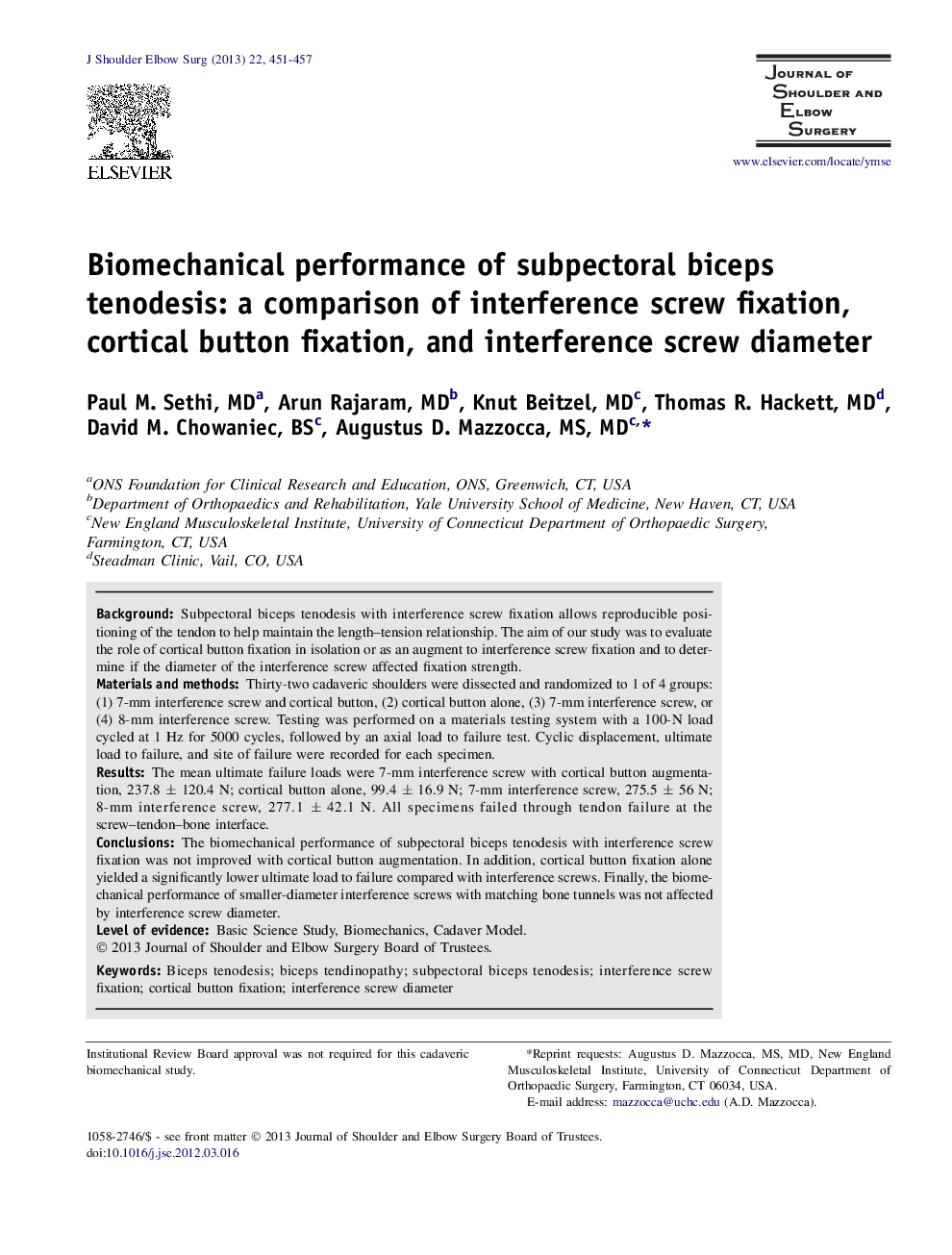| کد مقاله | کد نشریه | سال انتشار | مقاله انگلیسی | نسخه تمام متن |
|---|---|---|---|---|
| 4075014 | 1267028 | 2013 | 7 صفحه PDF | دانلود رایگان |

BackgroundSubpectoral biceps tenodesis with interference screw fixation allows reproducible positioning of the tendon to help maintain the length–tension relationship. The aim of our study was to evaluate the role of cortical button fixation in isolation or as an augment to interference screw fixation and to determine if the diameter of the interference screw affected fixation strength.Materials and methodsThirty-two cadaveric shoulders were dissected and randomized to 1 of 4 groups: (1) 7-mm interference screw and cortical button, (2) cortical button alone, (3) 7-mm interference screw, or (4) 8-mm interference screw. Testing was performed on a materials testing system with a 100-N load cycled at 1 Hz for 5000 cycles, followed by an axial load to failure test. Cyclic displacement, ultimate load to failure, and site of failure were recorded for each specimen.ResultsThe mean ultimate failure loads were 7-mm interference screw with cortical button augmentation, 237.8 ± 120.4 N; cortical button alone, 99.4 ± 16.9 N; 7-mm interference screw, 275.5 ± 56 N; 8-mm interference screw, 277.1 ± 42.1 N. All specimens failed through tendon failure at the screw–tendon–bone interface.ConclusionsThe biomechanical performance of subpectoral biceps tenodesis with interference screw fixation was not improved with cortical button augmentation. In addition, cortical button fixation alone yielded a significantly lower ultimate load to failure compared with interference screws. Finally, the biomechanical performance of smaller-diameter interference screws with matching bone tunnels was not affected by interference screw diameter.
Journal: Journal of Shoulder and Elbow Surgery - Volume 22, Issue 4, April 2013, Pages 451–457